Introducing solids is an exciting milestone for you and your baby! Around six months of age, most babies are ready to explore new tastes and textures alongside breastmilk or formula. At Little Scholars, we support families through this journey, whether you choose purees or baby-led weaning with soft whole foods.
Most babies show signs of readiness for solids around six months. Look for these cues:
Sitting up with minimal support
Showing interest in your food
Opening their mouth for a spoon or reaching for food
Losing the tongue-thrust reflex (pushing food out of their mouth automatically) Though as babies begin to take in food, this instinct may remain until they get used to it.
Whatever way you approach the first tastes, go slow and offer just a couple of teaspoon-sized portions at first. Hand them a spoon to let them hold, though they’ll likely just eat (squish) with their fingers
You can start by offering food once a day alongside their normal amount of breast milk or formula, then work your way up over the coming weeks to three or more feedings a day.
To help babies adjust to the unique tastes of foods, one approach we like starting with vegetables for the first 14 days, one new, iron-rich vegetable each day. This helps develop a taste for nutritious foods before introducing fruit or other sweet flavours, as they’re already accustomed to sweet flavours through formula or breast milk.
Queensland Health recommends including iron-rich foods every day to help baby grow well, such as lean meat and legumes, baby cereal with iron, and green leafy vegetables. Of course, you’ll need to work up to these denser foods. It’s also recommended to introduce nuts into diets soon, as this can help reduce allergies. However please note we do not offer nut products at our campuses.
We support both traditional purees and baby-led weaning (BLW). Here’s how they differ:
Purees: Smooth textures, spoon-fed by a parent or educator, with gradually thicker consistencies over time.
Baby-led weaning: Soft, whole foods in safe shapes that babies can pick up and feed themselves, encouraging independence and coordination.
Regardless of your approach, always supervise your baby while they eat and offer soft, easy-to-swallow foods. At our campuses, babies are closely supervised during meals and snacks, but we also use these as opportunities to bond, having lots of fun interactions and conversations with our little ones while they eat!
Offer solids when your baby is alert and in a good mood
Start with small amounts. A teaspoon or two is plenty at first
Encourage exploration. Expect mess, it’s part of the learning process!
Be patient. Some babies take time to adjust to new textures
Watch for allergies. Introduce new foods one at a time, leaving a few days in between common allergens like eggs, dairy, or nuts.
At Little Scholars, we help families introduce solids in a way that works for them. Our educators can support your baby with purees or baby-led weaning while ensuring meals are safe, nutritious, and enjoyable. We work closely with families to understand preferences and keep you informed about your baby’s progress.
Starting solids is an exciting step in your baby’s development. With patience, variety, and support, mealtimes can be a wonderful experience for both of you!
We aim to be an extension of your family and are here to support you and your child during those important childhood milestones. If you’re in need of high quality early childhood education for your little ones in South East Queensland, book a tour today.
When a baby or toddler is ready to reduce the number of naps they have each day, or even drop naps altogether, this can be an equally challenging transition for parents!
Daytime naps naturally lessen in length and frequency as a child gets older because they can tolerate more awake time, from both a physiological and neurological perspective as they grow. Circadian rhythms – your 24-hour body clock that helps control your daily schedule for sleep and wakefulness – also mature as sleep begins to consolidate, particularly at night.
Especially for new parents, you may be wondering what some of the signs are that your child is ready to drop a nap. Dropping a nap is a transition that happens over time. Babies need to decrease their number of naps incrementally, but that won’t happen on its own, babies and toddlers still need your guidance to help ease these changes. And our educators are here to help.
Since our educators spend a few days a week with your little one, they have the knowledge of what to look for in signs of tiredness, or readiness to stay awake just a little longer! It’s important to remember that each child is different. What works for one, won’t work for another exactly the same age or way, and this is not a process to rush, small people need their rest!
Here are some signs that may show your little one is ready to drop a nap:
“For some children, cutting down their bottles or altering their times they have bottles (obviously age-appropriate) may help with stretching wake windows,” says Hayley, an educator with our Deception Bay campus.
“We aim to wake the child through gentle means, such as hustle and bustle around them to help them wake more naturally, which can help too.”
Hayley says looking at wake windows as a guide for your child can help and you can find free resources and blogs by sleep experts online. But she says keep in mind small children going through leaps and teething may have more difficulty with their sleep, but these adjustments are usually temporary.
Keeara, an educator in the nursery at our Yatala campus says they’ve had some parents request help in stretching their child’s nap to one sleep to transition in the toddler room.
They find play in an outdoor environment during the morning keeps little ones occupied enough to stay awake – but says if their children did fall asleep, it was obviously needed, and educators will try for a short afternoon nap to make up for it.
Fresh air and active fun like sensory activities are a great way to stretch that wake time out a little longer for little ones. Maybe for your child, it’s making music or playing with different textures that will keep him or her engaged and interested just a little longer.
Our Facebook and Instagram channels offer ideas on creative activities our educators do across our campuses to entertain little ones, which can really help stretch out those wake windows.
Like Hayley, Keeara and her fellow educators have also found works is having lunch around 11:30 and putting bottles on the warmer at the same time so they’re ready to go when lunch is finished.
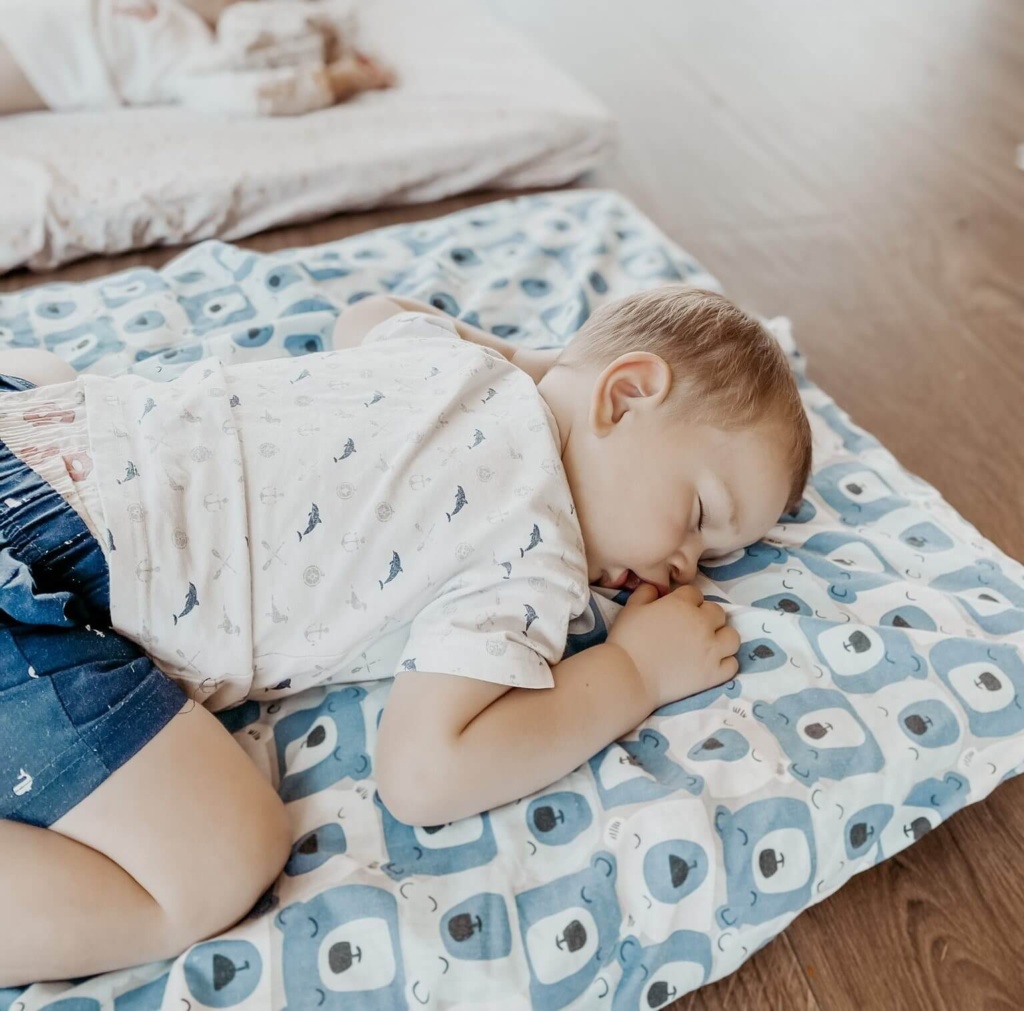
“We’ve found most of the children would have their bottle then self-settle in their cots as they were so exhausted at this point,” Keeara says. “Surprisingly, it worked really well and made the transition smoother, they even slept for a longer period of time having just the one sleep.”
Then comes the (often dreaded by parents) time when children are ready to drop naps completely.
“We have a fair few two-three-year-olds in our room who have dropped sleep,” says Skye, an educator at our Yatala campus. “The most common sign for them was becoming upset at rest time, moving around a lot and getting up for drinks, toilet and to just tell us something.”
She says even if educators suspect a child is ready to drop naps, they start off with still giving the child a bed, but giving them a quiet activity like books, puzzles, or drawing supplies.
“That way they still have the option to fall asleep if they want to, if they haven’t slept the whole week, we then move them to an activity mat that we keep clear of beds, again for quiet activities while their peers sleep,” Skye says.
Independent play is also important for your child’s development, and it’s central to effective quiet time, so it’s worthwhile implementing it into your older toddler’s daily routine. Quiet time is a time during the day where your child has an opportunity to rest their busy little bodies and minds. The length of quiet time can range anywhere from 45 minutes to 2 hours, depending upon the child, but consistency in this new quiet time will work wonders for the whole family.
Skye says dropping naps is something they talk to parents about, and from those discussions, they work together on a plan to help the child adjust.
While it feels increasingly common, when the news cycle often brings unsettling stories into our homes, it can be tough for parents to find the right approach to discuss such events with their young ones, or even know if they should. Here we share some thoughtful strategies to help you navigate these challenging conversations, ensuring you, and your little ones, feel secure and supported.
How to navigate this news with the family can depend heavily on the age and maturity of the members.
During a time in which the news may make us feel defeated and deflated, or fearful and stressed, we hope we can support parents in addressing global events sensitively and thoughtfully, especially important given that young children are always looking and listening.
Young children’s exposure to news should be limited, according to experts. This can be done by turning off the TV during news broadcasts and restricting children’s access to your social media channels to shield them from disturbing images. It’s also advisable to limit discussions about frightening events around young children, saving such conversations for after they’ve gone to bed. While some exposures may be unavoidable, these steps help protect your little ones from unnecessary distress.
For small children, they may not be able to verbalise their feelings, so in times of stress, or if you think your child may know what’s going on in the news, be attuned to any changes in mood or behaviour. These changes in your child could include:
Start by gauging what your little ones already know about a current event. For school-age children, inquire about their knowledge from school or social media. It’s important to consider the developmental stage of your child, as younger ones may struggle to distinguish fact from fantasy, typically gaining this ability around the ages of seven or eight years.
If your child shows disinterest or reluctance to discuss the event, respect their feelings and try avoid repeatedly pressing them further, but remind them you’re always there to listen or even just when they need to cuddle.
Be present for your child and prepared for questions. When addressing questions from children, it’s important to be honest yet selective about the details you share. Aim to alleviate fears and provide reassurance to your little ones because you’re their safe place. Listen attentively to their concerns, especially after distressing news events. Address any fears about personal safety by being present during this time and don’t dismiss your children’s fears and concerns.
It’s perfectly acceptable to admit if you don’t know an answer; take it as an opportunity to explore the answer together using age-appropriate resources.
Meanwhile, keep monitoring what your child is watching and limit repeated exposure to potentially distressing news, as the repeated exposure during these 24-hour news cycles can drive a child to dwell on what they’ve seen and heard.
Some adults may remember American children’s TV star from the 1970s and 80s Fred Rogers, who once shared advice that still could be applied today. He said, “When I was a boy and I would see scary things in the news, my mother would say to me, ‘look for the helpers. You will always find people who are helping.’” If children hear about a car accident, talk about the brave bystanders and paramedics who quickly arrive on the scene. If they hear about war abroad, you could about all the ways people come together to help those in need – providing aid, opening their homes, and raising money. This could and should segue into a conversation about how as a family you could help people who’ve experienced adversity or traumatic situations, like a house fire or homelessness.
Appropriate age-language is important here, because young brains just aren’t developed enough to understand some of the harsh realities of the human experience. Even something simple like using the verb ‘hurt’ rather than killed, murdered, stabbed, etc all of which are verbs that could scar young children.
Sarah Bergman, a psychotherapist with Counselling on the Coast, says parents should also be aware of their own conversations, actions and moods, because children can be very attuned to their parents. She agrees that if parents are noticing changes in their children, they should provide a little extra care and attention, but says they should mindful of giving over-the-top anxious attention as this can further little ones’ worries.
“It may just be that parents provide more presence to their little ones at this time, allowing opportunities for anything that needs to emerge and it may just be a little bit longer snuggle at bedtime, where they integrate a felt sense of warmth and safety, that all is ok in their little worlds with mum and dad as their protector,” Sarah suggests.
Finally, if you’re concerned about your child, this is a conversation to have with early childhood educators and your Little Scholars campus manager. We’re on your family’s team, so please tell them about any behavioural changes you’ve noticed, what you’ve done at home and what your wishes are for while they’re in childcare.
Our educators have been trained in trauma response and can even offer insight into your child or suggestions on how to further navigate the difficult feelings they may be experiencing.
Disasters, the media and your child
We’re sure approximately 96.3 per cent of parents deal with a child who, let’s say, is choosey about what they want to eat. So choosey, in fact, they may choose to eat almost nothing you put in front of them. The amount of stress that puts on parents can be surprisingly strong. After all, as adults, we eat what we want, we understand benefits and consequences of what we put in our bodies, we understand when we’re famished and when we’re just not that hungry. But for some reason, when it comes to the little humans we’ve created, their diet can become a massive focus of parenting-what-did-we-do-wrong. You want so badly to make all the right decisions in parenting, to ensure your child is well-fed from a variety of nutritious sources so they can grow to be the healthiest, best version of themselves.
So how do we handle this picky phase – (though the term phase suggests it’s a short period of time when in fact it can be years or even a lifetime of challenging food preferences)?
We brought the village together and came up with some suggestions to ease the stress mealtime puts on everyone.
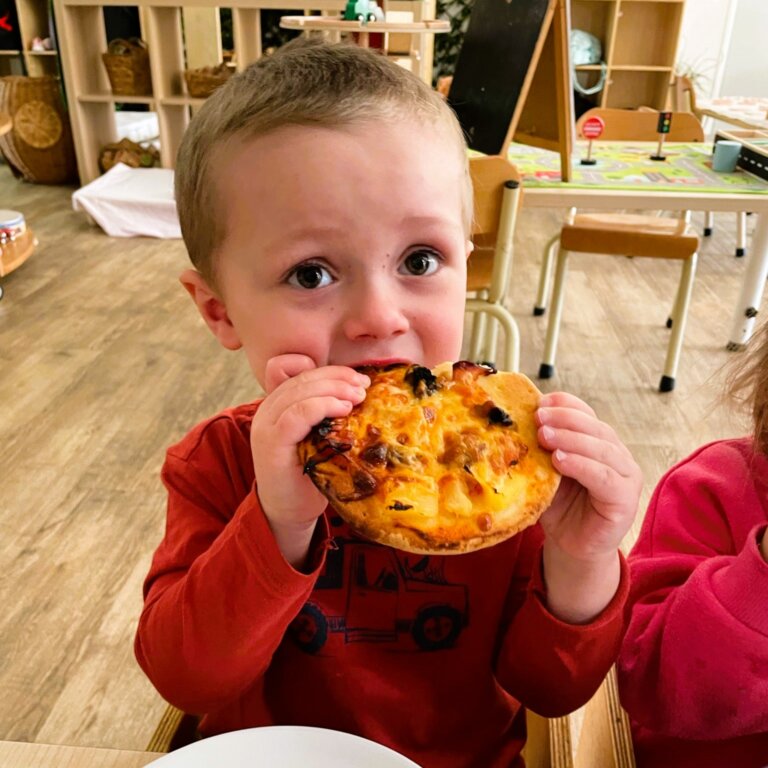
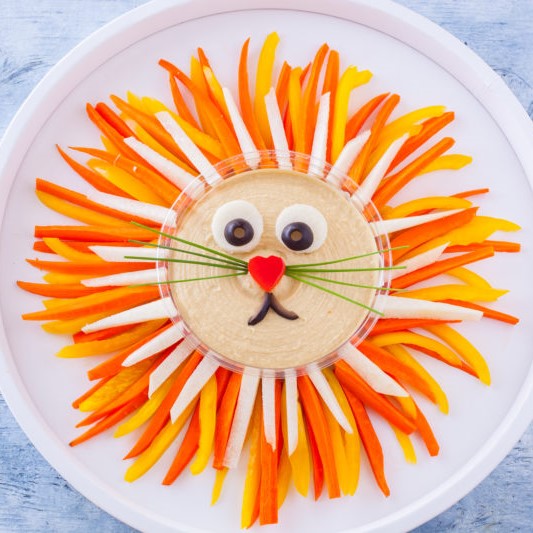
19. If you have the creativity and the time, present the food into characters, scenes or animals your child likes. Search for ideas on Pinterest or Instagram!
20. Don’t answer the question ‘what’s for dinner’. Come up with a silly answer such as “bugs and onions”, or something obvious ‘food’, but don’t give them time to dread dinner.
21. In Piaget’s developmental stages, there’s a phase known as the preoperational stage, where a child’s understanding of conservation is still developing. For example, if you pour juice from a short, wide glass into a tall, narrow one, they might believe the tall glass contains more juice because it looks “bigger,” even when they see the pouring happen. This concept can be cleverly applied to serving vegetables to children. By arranging the veggies closer together, they seem “smaller” to the child, giving the impression that they’re eating less. Conversely, spreading out items like chicken nuggets can create the illusion of a larger portion, making mealtime a bit more appealing to them
22. Everyone at the table eats the same meal, but try to include one item everyone likes. No alternatives, or if you have to, make the alternative something like veggie sticks and hummus. Eating together as a family is also a great way to bond and create lasting memories.
23. The one-bite rule: say something like, “Remember the time you didn’t think you’d like cherries, but you did? Let’s try this sweet potato now, because you might like it. Once you try it you can say, “No thank you!” but you have to at least try it! Then that food is no thank you food.”
24. The ‘silver bowl snack’ to expand their palate, one tiny taste at a time. If your child doesn’t like something, say something like, “well your tastebuds must not be grown up enough for that yet, let’s see what happens next time you try it.” Since children often want to be more “grown up” they may willingly try the offending food again the next time it was offered. If the child decides to try it, make a big deal about how grown up your child is getting.
25. Keep pre-cut vegetables and fruits in a bowl or clear Tupperware container, front and centre in the fridge and — important — then place some on a platter on the kitchen counter in your child’s line of vision all afternoon.
26. Do your children like mashed potatoes? Get more veggies in there! If the mashed potatoes turn green? Well, they’re Hulk potatoes obviously. Are they orange? Then they’re Nemo or insert-your-child’s-favourite-orange-character-here.
27. “We get our children to pick a meal they want to eat for dinner for the week and we buy the ingredients then they all get a night to cook dinner for us, makes them interested in wanting to eat the meal they make for us, and they need to choose something with a minimum of two veggies.” Jess, enrolments officer.
28. Sprinkles also go a long way. Yes, actual sprinkles, or foods that they can shake on like sprinkles. Think seasonings, herbs and chia seeds. If a child doesn’t like the food presented, ask what you can add to make it more exciting. And let them do the sprinkling. Sometimes, it really is as simple as that.
29. While it’s easy to use a smartphone or TV to occupy your child’s attention and you might even see your child mindlessly eat, that’s actually not what you want. You want children to be focused on the food, but also focused on family time and conversation.
30. Relax! Try not to put pressure on them to eat. You wouldn’t want someone constantly commenting on your plate choices and habits. Mel, operations manager of Little Scholars, said her son has been picky since he was two years old. When she spoke to a nutritionist, she said “as long as he was eating 20-25 different foods throughout the week he would be OK.” While it can feel stressful, your child is likely getting the nutrients they need, whether you’re offering fresh, frozen, tinned foods, you’re trying your best, your child is flourishing, and one day, this will just be a memory!
For parents leaving their babies or young toddlers in care for the first time, it can be a stressful experience. When the paid maternity leave ends, parents must make the decision of whether or not both parents will work outside the home. The choice to leave their young child in early learning and care can create a number of concerns, one big one being how their relationship with their young child will be affected if the parent is not spending the majority of the child’s time with them. These are valid concerns, but research has suggested infant attachment to their parents is not generally affected by being in care, so long as the parents have a strong bond with the child when they are with them.
Understanding Attachment Theory
Attachment theory was first introduced by John Bowlby, a British psychoanalyst and psychiatrist in the 20th Century. Bowlby observed that early attachments could significantly affect a child’s emotional development and adult relationships in later life. He concluded that children between six and 30 months were very likely to form emotional attachments to familiar caregivers, especially if the adults are sensitive and responsive to child communications. This led him to propose the Attachment Theory after he studied the negative impact of maternal deprivation on young children.
Mary Ainsworth, an American psychologist who worked under Bowlby early in her career, later devised an assessment technique called the Strange Situation Classification (SSC) to investigate how attachments might vary between children. Her research in Uganda, then her well-known Baltimore Study in the 1960s, in which she noticed distinct individual differences in the quality of mother-infant interactions over time, led her to categorise these different attachment styles into three types: secure attachment styles, insecure attachment styles, and not-yet attached. She found a connection between maternal sensitivity and secure attachments. Sensitive mothers were familiar with their babies, provided spontaneous and specific detail about their children, and babies of sensitive mothers cried less and felt free to explore in the presence of their mother. Generally, she concluded that babies of sensitive mothers have secure attachments.
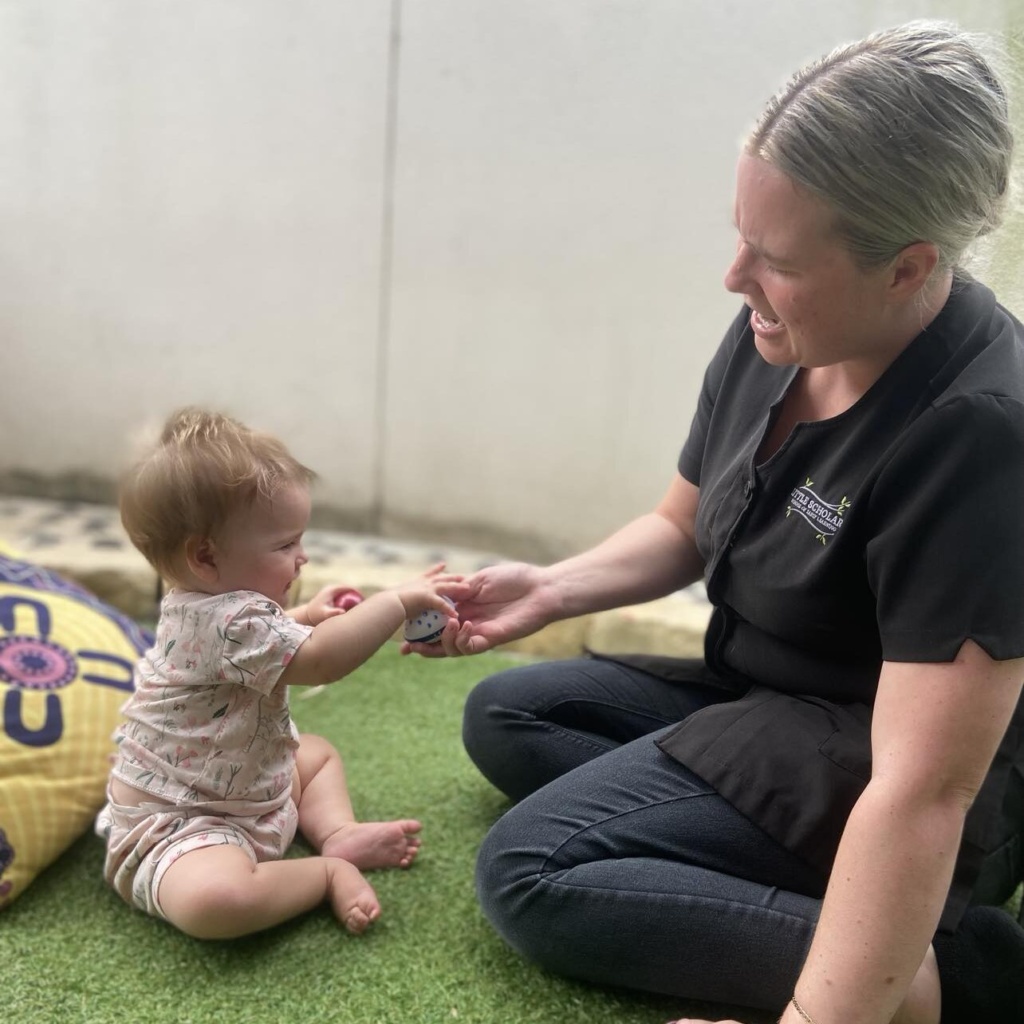
While Bowlby’s initial findings focused on maternal deprivation, later studies have contradicted his emphasis. Schaffer & Emerson (1964) found that specific attachments started at about eight months and shortly thereafter, the infants became attached to other people. By 18 months, very few (13%) were attached to only one person, and some had five or more attachments. Rutter (1972) noted that several indicators of attachment, such as protest or distress when an attached person leaves, have been shown for various attachment figures – fathers, siblings, peers, and even inanimate objects. Weisner, & Gallimore (1977) found that mothers are the exclusive carers in only a very small percentage of human societies, and often there are a number of people involved in the care of children, such as relations and friends. Van Ijzendoorn, & Tavecchio (1987) argue that a stable network of attachment figures is more important than the number of figures.
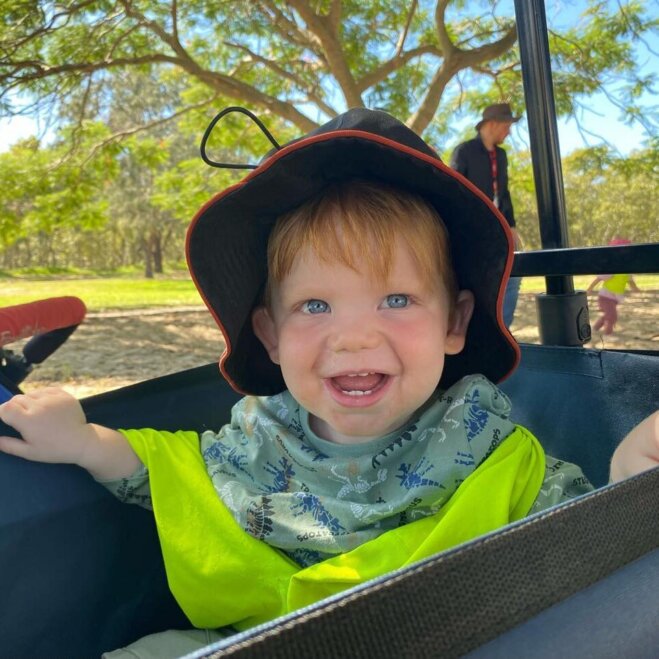
What an incredible asset online media has become when it comes to raising or educating children. From YouTube to Instagram, there’s a wealth of expert information at your fingertips that previous generations simply didn’t have. Thanks to online media, parents and educators can now access an array of information, tips, and tricks on child development, parenting, and education.
And of course, podcasts are an excellent way to learn while on the go. You can listen to them while commuting, during your daily walk, or even before bed. Here we have compiled a list of our favorite parenting and child development podcasts, divided into categories for parents and educators. Check them out!

A podcast about parenting, alternative education and stepping into the wilderness with children. Each week, Nicki Farrell and Vicci Oliver interview experts who inspire them to answer questions about parenting and education. They also share stories from families who took the leap, and are taking the road less travelled.
Maggie Dent, one of Australia’s favourite parenting authors and educators gives you practical tips and answers to your real-world parenting dilemmas.
Each episode of Unruffled addresses a reader’s parenting issue through the lens of Janet’s respectful parenting philosophy, consistently offering a perspective shift that ultimately frees parents of the need for scripts, strategies, tricks, and tactics.
Listen to conversations with experts on a variety of topics related to children’s mental health. Episodes offer practice wisdom from experts in the field and will give you an insight into the work and values of the National Workforce Centre for Child Mental Health.
Based on the popular RCH Kids Health Info fact sheets, the Kids Health Info podcast explores common topics and concerns with experts in children’s health. Hosts Margie Danchin, Lexi Frydenberg and Anthea Rhodes are all paediatricians and mums, so they know first-hand what keeps parents up at night. Every episode features guest experts in a range of child and adolescent health specialties, and lots of practical tips and advice.
Hamish Blake chats with other dads he really admires about their approach to ‘dadding’, and in the process hopefully learn a little, steal some of their hard earned wisdom and help dads dad a tiny bit better.
All humans learn through play. Join Kristen RB Peterson of Learning Wild as she chats all things early childhood education, preschool, nature and forest school, homeschool and parenting.
Hosted by international keynote speaker, educator and founder of Wearthy; Lukas Ritson, Play it Forward is an educational podcast about the importance of play. With the increase of technological advancement, it has never been harder to get kids playing outside
Early Childhood perspectives is a fortnightly podcast devoted to exploring the often overlooked concepts and issues of the Australian Early Years Sector.
This podcast covers meaningful topics in early childhood education with some of the sector’s most experienced educators and subject matter experts. With each short episode, its aim is to provoke minds and inspire excellence in early childhood education.
Barbi Clendining from Firefly HR and Saurubh Malviya from We Belong Education have teamed up to bring to you a fun and informative conversation and talk about every aspect of the Out of School Hours profession.
OK, we fibbed. It’s not JUST Australian podcasts. Here’s a few international podcasts that are quite popular with the kids these days. (and by kids, we don’t mean baby goats, or children really, but we’re just trying to sound cool)
Building creativity one leaf and bolt at a time. Join Dr. Carla Gull, American educator and mother of four boys, as she talks about getting outside and exploring loose parts.
A funny take on parenting with UK hosts Rob & Josh as they share their tales of parenting woe and chat to celebrity parents about how they’re coping, or not coping.
Join American clinical psychologist and mother of three Dr. Becky Kennedy on her weekly podcast, as she takes on tough parenting questions and delivers actionable guidance—all in short episodes, because we know time is hard to find as a parent. Her breakthrough approach has enabled thousands of people to get more comfortable in discomfort, make repairs after mistakes, and always see the good inside.
Each episode discusses issues today’s fathers face navigating work, parenthood, relationships and play. We share stories of dads who are active and engaged in the decisions, the drudgery, and the pains and the joys of parenthood. Our parenting podcast not only brings modern dads into the conversation, but also – regardless of gender – our spouses and partners, friends and colleagues, and leaders in business, entertainment and media.
Our days seem to be getting more and more hectic. There’s the 9-5 slog, rushing to and from work, drop-offs and pick-ups at daycare and school, running to appointments, weekends are for relaxing, or are they actually for rushing to children’s sports, house and yard maintenance? Even being more connected to devices means we might be losing connections with each other. We always seem to be busy, finishing one task or appointment so we can cross it off the endless list.
If we reflect on our own childhoods, do our children’s developing years look like ours? Maybe not. We likely (and hopefully) have memories of aimless play, exploration and time to dream.
Even going on family walks may come with encouragements of ‘c’mon Freddy, let’s go!’ or ‘keep walking’, but why? Challenge yourself not to give your children any instructions for the next minute the next time you’re out for a walk. Was 60 seconds hard to get through? The funny thing is, on walks, you’re probably not even in a rush.
Your children may constantly feeling hurried, rushed, pushed to keep moving. This can create feelings of anxiety, stress and resentment.
There’s a movement brewing the last few years, called Slow Parenting. Have you heard of it, or pondered it yourself?
According to a 2015 article in the Boston Globe, slow parenting ‘cherishes quality over quantity, being in the moment, and making meaningful connections with your family.’
In the article, Carrie Contey, a prenatal and perinatal psychologist, says young children need a balance of activity and down time.
“In early development, children are still wiring. They need to have moments of doing and moments of being for integration to happen,” says Contey. “If they don’t take space for integration that leads to meltdowns and overtiredness.”
Need some ideas on how you can slow down your parenting, and in a way, time?
Next time you’re about to hurry your child, take a moment to think about why, and how you can approach it differently. If it’s about being late for something say bed time, will an extra 15 minutes affect them adversely once and a while? What about what they stand to gain from the extra time? If it’s getting to school and work on time, reflect on how you can alter your routine to allow for a bit of flexibility. You never know what small moments will make up lifetime memories for your child.
As parents and as educators, it’s our job to keep children safe. For children, it’s their job to explore, push limits, move their bodies, and happily tune out what they don’t want to hear.
So when a child is engaging in risky play – which is so important in a child’s development as it furthers their frustration tolerance, critical thinking skills, self-confidence, resilience and so much more – it can also put the watching adult into panic mode, often triggering the phrase ‘be careful!’
But, if that adult expects the child to immediately stop what they’re doing after uttering (or shouting) those two words, they probably have another reality coming. ‘Be careful’ isn’t terribly effective because it’s vague and lacks specificity for a toddler. Saying it on repeat will likely lose any small amount of effectiveness it did carry because, well, being told to be careful isn’t any fun. Or worse, hearing that phrase could create fear and dim a child’s curiosity and sense of adventure.
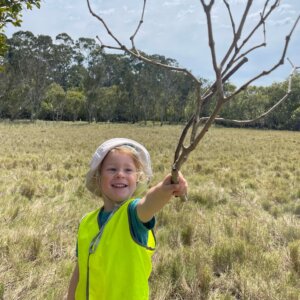
As adults, we also need to think about what we mean when we say ‘be careful’. Do we want the child to stop what they’re doing? Do something differently? Slow down? Do we think they will get hurt? Every situation is different, but it’s worth thinking about the intention behind the phrase. Is it possible the child could get seriously hurt? Is what the child is doing put another child at risk? Is there something valuable that you don’t want damaged?
Perhaps rather than ‘be careful’ you say:
‘Looks fun, just watch out for your little sister!’
‘Do you hear the cars? The road is close by.’
‘Before you throw that stick, just watch for the window over there.’
‘Do you feel safe?’
‘I’m here if you need me.’
‘Maybe just slow your body down a little bit.’
‘Focus on where your feet are.’
‘Using two hands might help you hold on tighter.’
‘What’s your plan for coming back down?’
Even just asking ‘does your body feel safe?’ may give your little one a second to pause and think about what they’re doing, and perhaps change course if needed.
For adults, when they observe children participating in risky play, if they approach it with curiosity and give specific feedback that focuses on creating awareness and problem-solving skills, it helps your toddler becomes more confident in their skills, abilities, problem-solving and learning.
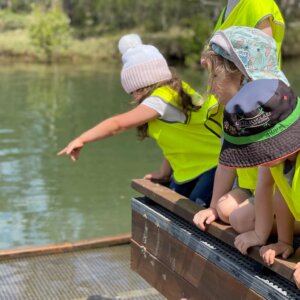
Risky play is something to be encouraged. Something happened between the time when many parents of small children were little ones themselves, to now. We may remember our parents letting us go play unsupervised, as long as we were back before dark. That play may be some of your best childhood memories. Society has become more risk-adverse in recent decades, from parents worries about kidnapping and injury, to the fear of judgement from others thinking they’re bad caregivers can drive many parents to intervene before their child can engage in risk during play. But those fears could actually be hurting children’s development by hovering over them constantly. Research shows that engaging in risky play can actually reduce the risk of injury, too. Something parents and educators can do is teach young children to risk-assess.
For example, rather than worrying about if your child is going to get a sharp bindi seed in his or her foot from running across grass barefoot, involve your child in the risk assessment. In this case, point out what a bindi weed looks like, and encourage your child to look for the weeds with shoes on before deciding if it’s a good idea to take shoes off. By assessing ‘risk’ situations together, your child will learn increased ability to hypothesize, predict, experiment and investigate, and your child will feel you trust their ability to make safe decisions. it’s all about balancing the risk with the benefits. Imagine if your child was running barefoot in the grass and you spotted bindis and yelled ‘Be careful!’ your child could be bewildered by your cry, ignore your yelling and keep going, or could possibly stop, landing perfectly on the sharp weed you want him or her to avoid.
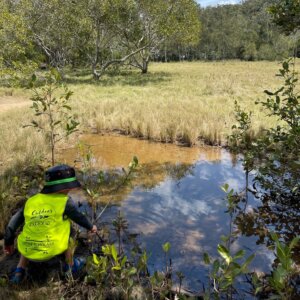
At Little Scholars, risk assessment is a part of our programming, such as bush/bush kindy or loose parts play, where children have the opportunity to guide and direct their own learning tying in with activities that are child-led and learning is a process of discovery. Sites are pre-risk assessed by educators, and children are involved in the risk management process, guided to look out for themselves and have a group discussion about it before play.
“It’s all about setting boundaries with the children and asking them about what risks they think may be involved before they go ahead,” says Melanie, operations manager for Little Scholars. “We wouldn’t use ‘risk’ with little ones, so it may look like ‘how can we be safe when we play in this area?'”
“Play is a powerful behaviour that is often a missed agenda for many early childhood professionals. Extrinsic agenda will often lead to children being told what they should experience, as opposed to living the experience, says Susan, Little Scholars’ pedagogical leader and practice manager.
Susan highlights Lev Vygotsky’s theory of play as a lived experience.
“Too often, adults feel the need to apply an adult agenda, often with good intention, however this often has the potential to limit the actual multifarious nature of what we call play.
“As adults, we need to trust in the play process and accept that children will create situations in which they can act out emotions in ways they feel they can. When given the freedom to do so, children will demonstrate ability for exploration, imagination, and decision-making.”
Related:
Why do our children sometimes express some big bursts of negative moods after they come home from a seemingly fun day at childcare? This could be due to after school restraint collapse. Meanwhile, you expect them to come home happy and excited to tell you all about their day of crafts, books, playtime and outings, after all, you often get reports that your child was an angel all day. But when he or she comes home, that angel seems to have taken those wings and flown away, being replaced with something not so angelic.
Some child experts call it ‘after school restraint collapse’, and it seems to happen because children hold it together all day in childcare. Children use a lot of energy being well-behaved, following direction, sitting still, retaining information, and all of this without their primary attachment figures, their parents/caregivers. It can also simply be that some children meltdown because they are tired or overstimulated. Wanting to learn more about Little Scholars and how we deal with these big emotions? Contact us today.
This leaves your child’s best opportunity to release their emotions when they get to a safe place, their home. Those emotions can take the shape of crying fits, whining, screaming, disrespect or physically acting out to parents or siblings.
“I always say to parents, ‘do you have a best friend, someone you let all your emotions out when you see them? You are this to your child and when they see you after a big, busy day at Kindy, it all comes out,’” says Libby Kissell, a lead educator with our Redland Bay South campus.
“Rest assured they had an amazing day, but they let it all out when they see you because YOU are their person, their safe zone.”
Young children haven’t yet developed the essential brain wiring or had the necessary life experience to be able to calm themselves down from big feeling states, which is why they experience such frequent meltdowns. They know they can do this at home because they’re in a place where they’re loved and supported.
Your child is loved and supported by our team at Little Scholars, talk to us if you’re struggling and we can think and discuss how to make things easier for your little one.
“As an adult, we come home from a big day at work and we just want time to ourselves to zone out and not have to think,” says Holly Medbury, an educator from our Stapylton campus.
“We might even get annoyed if people want our attention, kids feel the same, but often have difficulty expressing it. Children are little people with big emotions, they too need some time to ‘chill out’ or a friend to be there and hug, with no expectations. It’s just reassurance for parents out there that they are doing an amazing job and providing useful strategies to help children cope with their big emotions.”
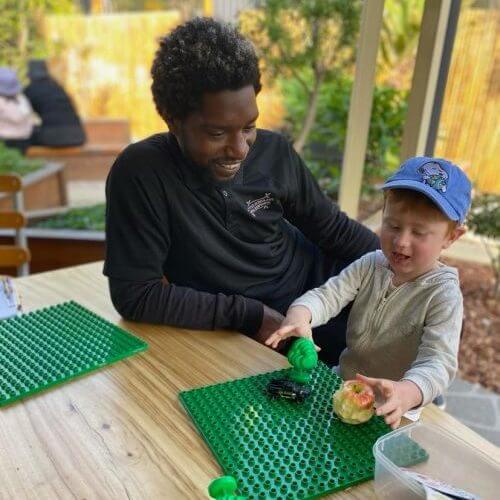
You can send them to their centre with a comfort toy or blanket that they can reach for when they need it. You could also send them with a picture of their family, or a note in their bag telling them how proud you are of them and how much you love them
Spend an extra five to 10 minutes with them before they start their day at Little Scholars. Just a few connected minutes with your child can make a significant difference in their day
Have a conversation with them on the way to childcare or when you get to their centre that focuses on what they can look forward to after you pick them up later, maybe that conversation looks like, ‘When I come to get you, would you like to go to the park or go pick out some new books to read at the library?’
Bring a snack for the trip home, sometimes hunger can be distracting for them and can stir up emotions.
When you pick them up, maybe all they need is a big reassuring hug. Maybe they need quiet. Maybe they’d like to tune out to some music they enjoy for a few minutes. Maybe they need to relax on a park bench or burn some energy at the playground. Follow their lead and take some time before asking questions about their day.
Again, feel free to talk to your educators about what’s happening at home. We have an open-door policy and we’re here for you. Your child’s educators, after spending time with your little one, may have specific ideas on how to help your child or can try to dedicate some quality time with your child to help them relax and feel cared for.
By understanding a little better why there are strong feelings coming from your child after a day of childcare, you are better armed to handle after school restraint collapse or even moderate reactions before their start.
For more information:
Are you a parent racking your brain trying to figure out how to get your little one to stop hitting, biting, or pushing other people?
The good news is, it’s really common. The bad news for you is, it’s still your child doing it and you have to deal with it.
For babies, this is a way to explore the world through cause and effect. Besides teething, babies bite to see what you’ll do. If you laugh, they might try it again to get the same reaction. If you get mad, that baby might be fascinated by your reaction, not quite understanding facial reactions and meaning.
For toddlers, they may have seen other children do it. They might do it because they’re angry, upset, hurt or excited and don’t have the means to express it differently.
Both babies and toddlers could be pushing, biting or hitting because they feel overwhelmed, bored, overtired or hungry.
No matter why your child is doing it, it can be frustrating and embarrassing for parents. But know that it’s not about you. It’s not your failure as a parent. When we think our child’s behaviour with us is a reflection on ourselves, we bring a lot of baggage with our response.
Now’s the time to manage it calmly.
“I like to explain to parents that these kinds of behaviours aren’t usually appropriate, but are age-appropriate and can come from a place of frustration in children,’ says Claire, an educator at our Nerang Campus.
“Biting is common around the age where children are beginning to learn how to talk and can’t quite get the words out and are frustrated.”
It is important to ensure when you are guiding a child’s behaviour to label the behaviour and not the child, Claire says. Telling them they’re being bad or naughty isn’t effective, and it isn’t likely to change the behaviour. Remember, every child is good. They are learning everything, including regulating and dealing with emotions and impulse control.
Claire also recommends not projecting your own feelings about your child’s negative behaviour. For example, try not to make statements like ‘Stop it, you’re making Mummy sad’ or ‘Look what you did!’ Try to remember that your child is learning empathy, so putting shame or guilt on their actions won’t fix the negative actions.
So how do you respond?
Stay calm. Your emotions can set the tone for how to bring down a heightened moment. By yelling or immediately punishing, you’re giving that undesirable behaviour attention. It’s also modelling explosive reactions, like what you as a parent are trying to adjust.
A calm, firm response could look like ‘Hitting/Biting/Pushing is never OK. I won’t let you hurt your brother.’ If the behaviour continues, a follow-up ‘I’ll move your brother over here to keep everyone safe.’
This sets and actions the boundary for behaviour. Once everyone is calmed down, that’s a better opportunity to teach coping skills, according to Sarah, an educator in our Senior Kindy studio from Deception Bay.
“Calm approach, sometimes for the older children, they need that time to themselves let them have their rage in a safe way, of course. There is no point in trying to get them to calm down when they are in the state they are in. It’s best to wait and then talk to them once they are ready,” she says.
If you feel your child is old enough to have a conversation about what happened, you could follow with, ‘You seem to have a hard time not pushing, I wonder why that is?’ If they tell you what/who is bothering them, you could tell/make up a similar story and tell them how you handled it. By modelling a response to a negative feeling, parents can help children understand and regulate their emotions.
Brooke, a Schoolies educator also at our Deception Bay campus also suggests asking the child what they need in that time can help.
“Every child is different and an approach that will work with one might not necessarily work for another or might not work every time which makes things difficult,” Brooke says. “I feel like asking the children what they need in that time is a big thing in diffusing a situation, because some children could want the space, where others may need a hug to feel safe and secure.”
Hayley, an educator also at Deception Bay in our toddler studio, agrees how the situation is dealt with is not a one-size-fits-all approach.
“I would say it would depend on the situation, age group and other factors,” Hayley says. “If it’s a child that’s not going to stop, I would then definitely redirect either to a different activity or to someone that they feel more comfortable with. For example, say it’s a child from the Senior Kindy room who’s just moved up to the Kindergarten room, you could ask them, ‘hey would you like to go see (previous educator)?’ if they say yes, it removes them from the situation, and it’s the child’s choice too.”
“I also like to give them a choice when redirecting so, ‘hey I know you’re frustrated, would you like to go run outside or do you want to do some painting?”
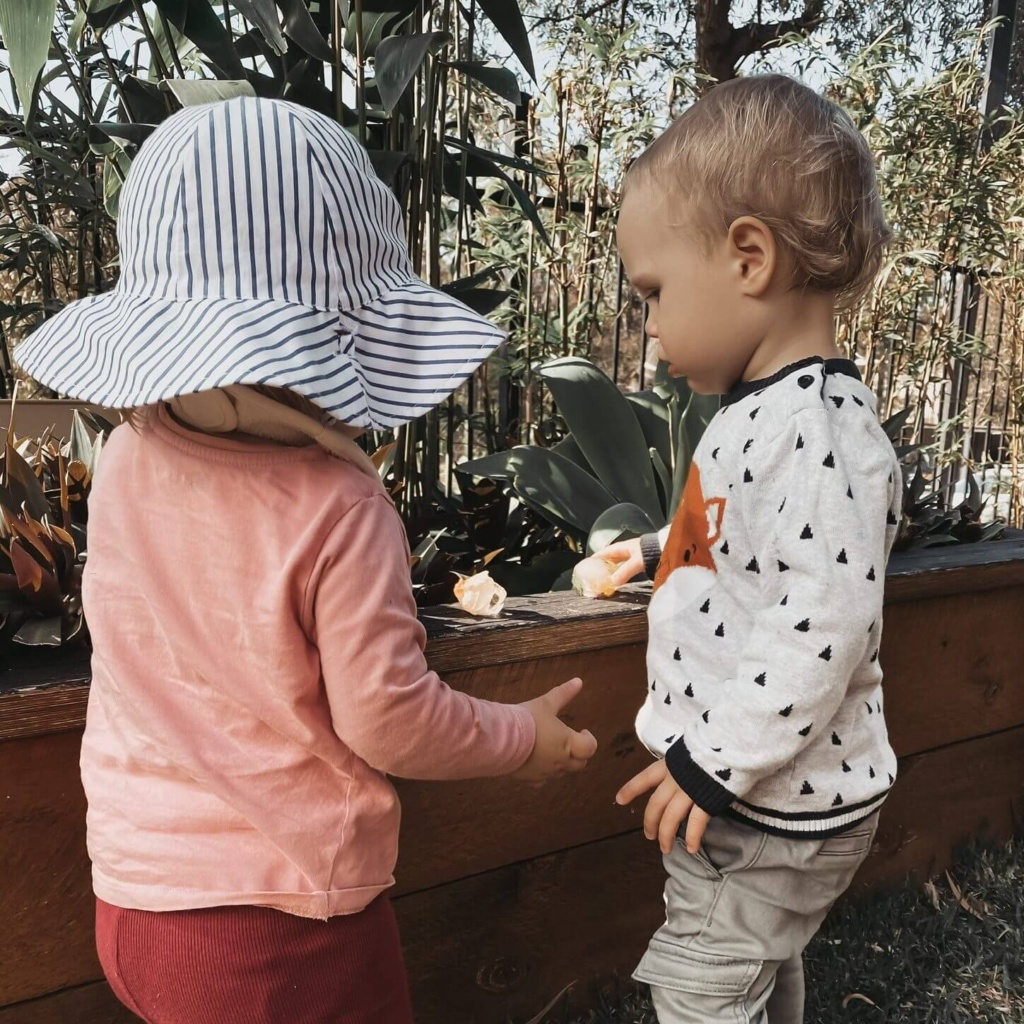
Some experts also recommend trying to fight the impulse to force your child to apologise. Children need to focus on learning to regulate those emotions, if you’re asking more of the child by forcing an apology, it’s likely to make them more frustrated or ashamed, and they won’t do what you’re asking, and certainly won’t feel like they’re being seen. They will learn apologies in time, but we don’t want them to think ‘when I’m sad I should say sorry’ but rather ‘when I’m sad I should think about what made me sad, take deep breaths, count to 10.’
However, it’s still important for your child to understand that other people have feelings too, so you could say, rather than forcing an apology, ‘Let’s see how we can make him feel better.” By involving your child in the resolution rather than ordering them to do something, you’ll likely see better results.
“Praise your children when they are doing something positive, even on the days it feels like all they have done is bite or hit,” Claire adds. “Soon enough they will be chasing the positive reinforcement and be replacing the negative behaviours with more positives.”
Guiding positive behaviour is a goal of Little Scholars by creating a safe environment for the children within our studios.
“This is guided by John Bowlby’s attachment theory,” explains Chloe, an educational lead at our Redland Bay South campus. Bowlby believed that the earliest bonds formed by children with their caregivers have a tremendous impact that continues throughout life.
“Every morning upon arrival, we create a warm welcome space for the children to be dropped off to. Once the children feel a sense of belonging within their learning environment, they are able to venture off and participate in the day’s learning.
“Respect and care are important parts of our day-to-day curriculum and is embedded in our learning by educating the children on their emotions identifying how they feel through use of conversation and cues, and guiding them in strategies that can assist with the way they are feeling,” she continues. “With these embedded practices, it helps to eliminate those rough behaviours.”
For more information:
Related topics
At Little Scholars School of Early Learning, we’re dedicated to shaping bright futures and instilling a lifelong passion for learning. With our strategically located childcare centres in Brisbane and the Gold Coast, we provide tailored educational experiences designed to foster your child’s holistic development.
Let us hold your hand and help looking for a child care centre. Leave your details with us and we’ll be in contact to arrange a time for a ‘Campus Tour’ and we will answer any questions you might have!
"*" indicates required fields
Let us hold your hand and help looking for a child care centre. Leave your details with us and we’ll be in contact to arrange a time for a ‘Campus Tour’ and we will answer any questions you might have!
"*" indicates required fields